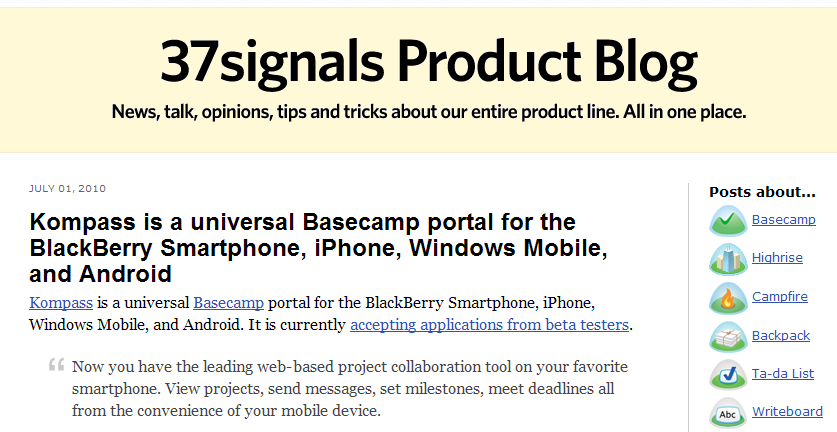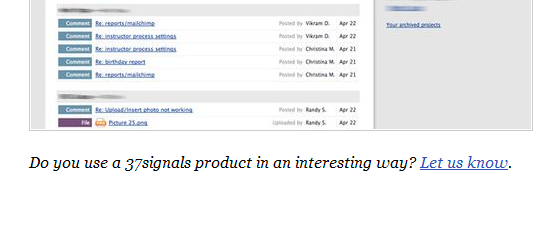 No matter how great your company is at playing the social media game, let's not kid ourselves… The ultimate goal for many businesses is profit, not engagements, retweets or Facebook likes.
No matter how great your company is at playing the social media game, let's not kid ourselves… The ultimate goal for many businesses is profit, not engagements, retweets or Facebook likes.
The real question is how many people are buying what you're selling?
Unfortunately, getting your blog readers to buy what you're selling, especially if you run an online business, can be difficult. This article will reveal a proven technique to turn your blog into a sales engine.
If your social media campaigns are not netting you any cash, then you'll be out of the game in a hurry.
Twitter, Facebook and YouTube are great marketing channels, but the blog is king. If you aren't setting your blog up to convert when new Twitter or Facebook users come your way, then your entire content marketing plan will be in jeopardy.
So what do you do to overcome this? You not only have to find a way to build in social proof, provide a value proposition, craft an offer and convince readers that your product is worthwhile, but you also have to do it in a way that isn't pushy, doesn't confuse people and works for you around the clock.
Sounds impossible, right? Wrong.
This article will introduce the concept of using your blog as a lateral sales page.
Leaving Breadcrumbs: An Introduction
Your blog is your content showcase, but it also does more. It functions as a hidden sales agent, ready to market for you.
If you're selling something, don't try to force all of the details on a single sales page, blog post or in an email. Why not take Jeff Walker‘s concept of the lateral sales page (once done via email), and apply it to your blog?
It's simple, really… Define what your blog needs to accomplish, break it into sections and turn those sections into blog posts. You can use a single post for each goal, or you can take your time and work them in on a monthly basis.
The best part about this is that posts don't have to be in order because there's no way you can guarantee people will read them in that order; and furthermore, when you introduce them casually, you don't raise any alarms. You've got your audience where you need them, which is focused and attentive.
By doing it right, you'll slowly work your way into the forefront of your reader's minds, without having to force your way in.
#1: Create an Offer
For now, stick to the basics. What are you offering (i.e., what is your product?), how much does it cost and what does it include?
Get World-Class Marketing Training — All Year Long!
Are you facing doubt, uncertainty, or overwhelm? The Social Media Marketing Society can help.
Each month, you’ll receive training from trusted marketing experts, covering everything from AI to organic social marketing. When you join, you’ll also get immediate access to:
- A library of 100+ marketing trainings
- A community of like-minded marketers
- Monthly online community meetups
- Relevant news and trends updates
Your Product
If you're blogging already, then you should be talking about your products anyway, but if you aren't, then start using your blog as a way to describe and explain what you're offering.
Is it a physical or digital product? Is it something I can download? What does it look like when it arrives at my door?
This part is all about the experience. Use posts like this to help your readers actually visualize owning the product.
The Price
Although you don't necessarily need to mention price (it should already be listed somewhere on your sales page or shopping cart), you can mention the factors related to price, such as how your product compares to those of your competitors, how important your ingredients or materials are to the value of your product and why the value of your product is far more than a number on a price tag.
The Package
Your product isn't just a widget, it's a package or a bundle, right? It's not just a digital product, but a system… a whole course.
This is also a great time to talk about upgrades, new releases (great for software), trial versions, improvements and any other changes that you make to your lineup. Introduce new products as they come. Create ribbon-cutting ceremonies. Add some flair and spice it up. Get people excited!

Check out how 37signals does it.
The goal here isn't to pitch, but to blog about your offer in detail so that you can eliminate this objection right off the bat. Readers won't buy unless they know exactly what they're getting, so don't leave it up to chance.

Discover Proven Marketing Strategies and Tips
Want to go even deeper with your marketing? Check out the Social Media Marketing Podcast! Publishing weekly since 2012, the Social Media Marketing Podcast helps you navigate the constantly changing marketing jungle, with expert interviews from marketing pros.
But don’t let the name fool you. This show is about a lot more than just social media marketing. With over 600 episodes and millions of downloads each year, this show has been a trusted source for marketers for well over a decade.

#2: Create Value
Obviously, if you want to convert a reader into a buyer, you'll need to convince him that your products are worthwhile. You've already done half the work by blogging about your offer, and now you've got to work to overcome a few objections.
This is where you get to dress it up a bit. Write posts about why your customers can't live without your product. Provide examples of people who aren't using it, but could really benefit from doing so.
Build your authority through informative posts and talk about the need for your services. For example, freelancers create need via detailed posts about how to improve design, how to improve copy, or how to build a better application. Internet marketers do this by talking about what could happen if you followed their system.
Online service companies such as 37signals share “insider” industry information and create not just a following, but also a philosophy around their product offerings. It's even easier with physical products… The classic “before” and “after” shots in weight loss commercials come to mind.
You get the idea.
Feel free to add a call to action at the end of these posts. If you don't point to the sales page, then point to an opt-in (continue this lateral concept there).
Again, this is where you talk about philosophy.
Are you green, easy to use, complex, efficient, experienced, and so on? What is it that makes your company tick, how does this feed into your product offerings and why should I buy from you instead of your competitor? You could easily write dozens of posts on these topics alone.
https://www.youtube.com/watch?v=oYNssS_DCPo
Look no further than Zappos if you want a great example of how company culture can drive sales revenue.
#3: Employ Social Proof
Social proof is one of the most important aspects of the blogging sales engine. It's not essential, but it makes your job easier. It's also something you should be doing on a constant basis because it creates a culture around your products and in today's market culture is extremely powerful.
Written testimonials are decent. They're a start. Most people don't really believe them, but they like to see them. So if you have them, post them on your blog in a place that's easy to see. If you don't have any, then get some.
Video testimonials are even better because we get to see a face. It's closer to being real. I prefer testimonials that are rough and imperfect because let's face it, if they're too polished they'll look like a late-night infomercial. Nobody believes those are real, do they?
Also, interviews work well too. In fact, interviewing customers is a great way for you to put them in the spotlight. Who wouldn't like to be on the blog of their favorite company's website?
Both audio and/or video work well, but it just doesn't have the same effect.
Another tactic is to post photos of your customers, or even better, of your customers with your product in/on hand. That's about as real social proof as you can get.
Lastly, as we all know, Tweet streams are extremely useful for showing social proof. “Surely this must be good if everyone is talking about it,” right?
Tweetizen allows you to embed streams, as does TwitStat.us. Strategically placed on a blog or sales page, these streams work as street teams for your product, and they do it 24/7.

#4: Take Your Time
Creating a lateral blogging sales page isn't a one-time thing, it's ongoing. If you do it right, you'll always be selling without having to sell, your customers won't have their guard up and you'll still be providing useful information. That's the goal really, to make use of your blog in a way that maximizes your ROI without making you feel like a marketer… even if you are one.
Just remember that a blog exists to serve one purpose, which is to keep your business in the black.
Are you using your blog to sell? If so, what tips have you discovered? If not, what's holding you back? Leave your comments in the box below.
Attention Agency Owners, Brand Marketers, and Consultants

Introducing the Marketing Agency Show–our newest podcast designed to explore the struggles of agency marketers.
Join show host and agency owner, Brooke Sellas, as she interviews agency marketers and digs deep into their biggest challenges. Explore topics like navigating rough economic times, leveraging AI, service diversification, client acquisition, and much more.
Just pull up your favorite podcast app, search for Marketing Agency Show and start listening. Or click the button below for more information.

